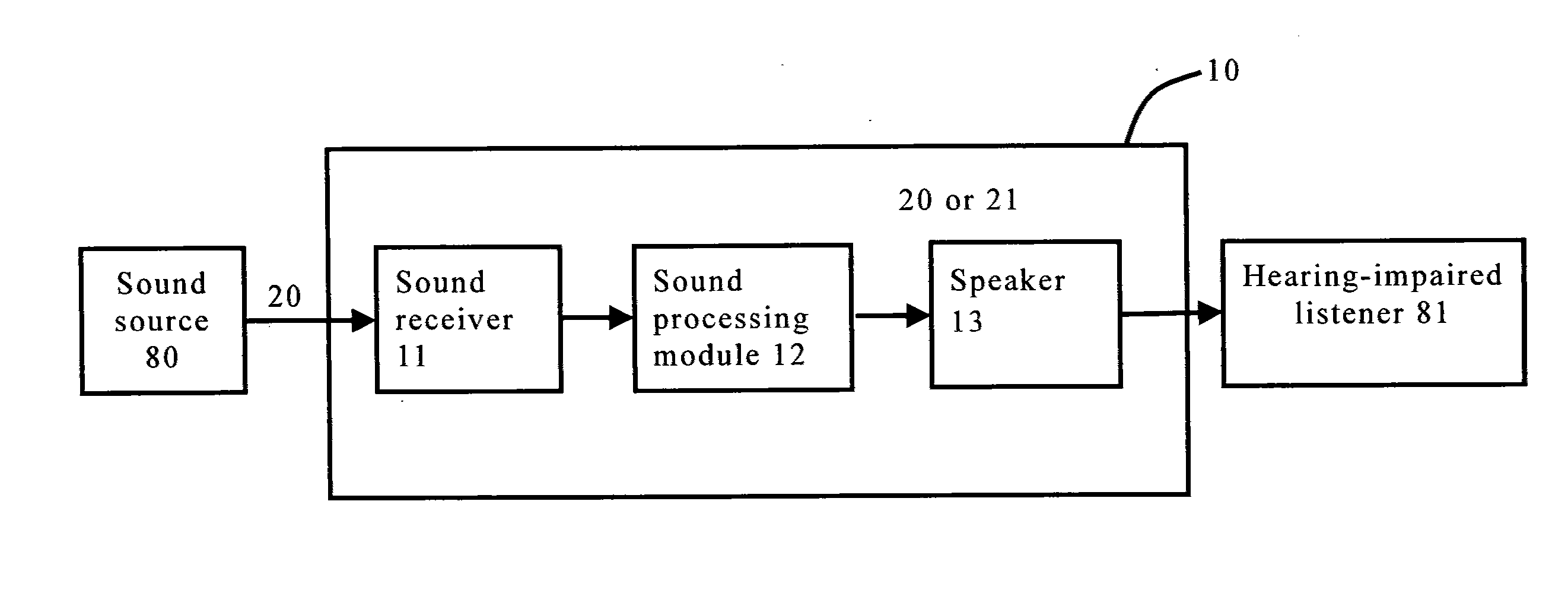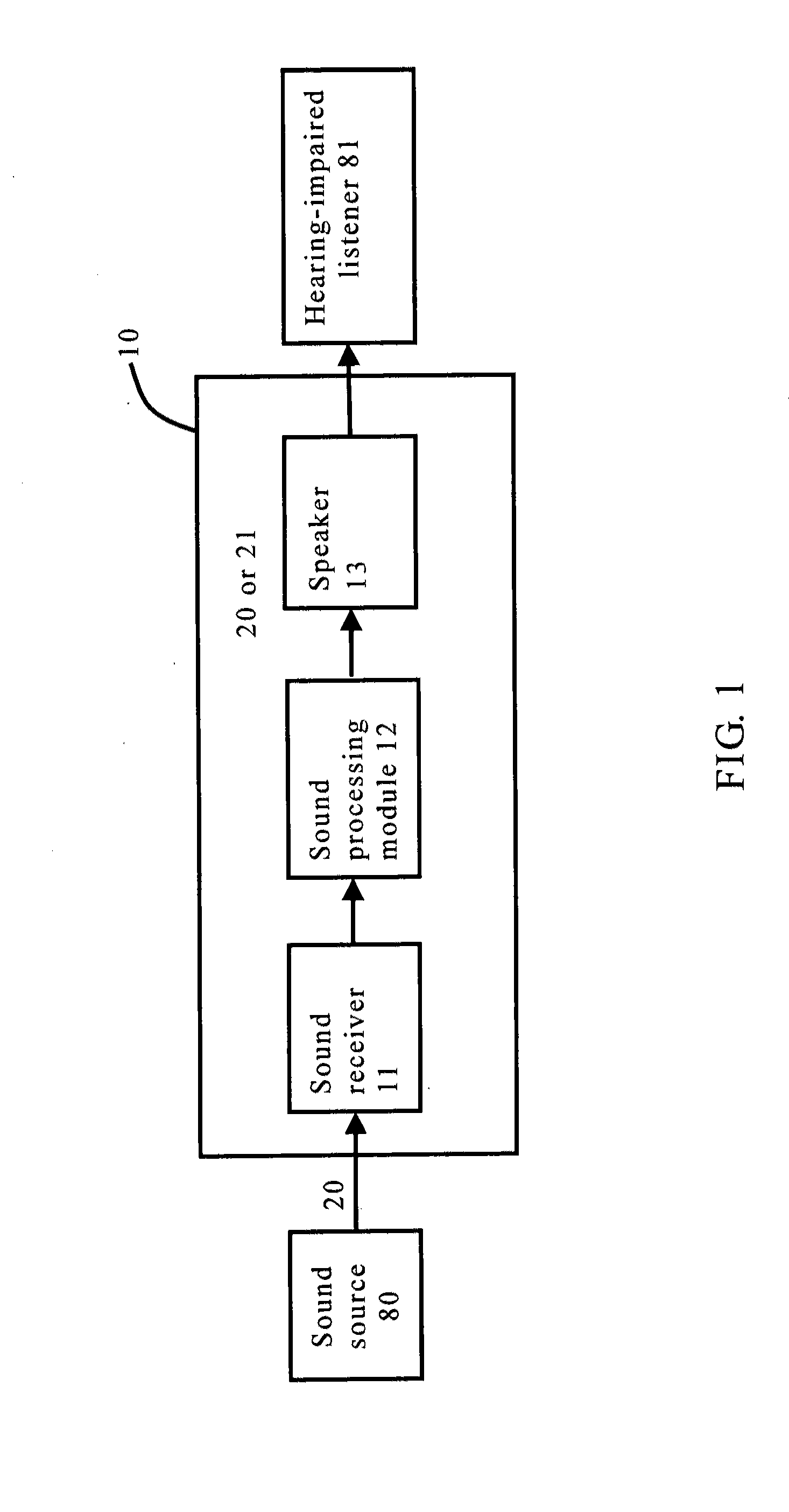Method and hearing aid for enhancing the accuracy of sounds heard by a hearing-impaired listener
- Summary
- Abstract
- Description
- Claims
- Application Information
AI Technical Summary
Benefits of technology
Problems solved by technology
Method used
Image
Examples
first embodiment
[0050]If the sound source 80 outputs “” as the input sound 20, in step 303, the sound processing module 12 will determine it is necessary for frequency modification. Therefore, step 304 will perform “frequency compression” or “frequency shifting” to modify the input sound 20 into the modified input sound 21. Please refer to FIG. 8 and FIG. 9 according to the present invention. As shown in the figures, after performing frequency compression to “” (from 0˜22050 Hz to 0˜11025 Hz), the first phoneme, “”, originally within a high frequency range, is compressed into a lower frequency range; further, the processed B is 96.1%, which is greater than 1.15 times of A (0.04%). The second phoneme and the third phoneme remain unchanged. As shown in FIG. 9, the energy at 500 Hz is enhanced.
second embodiment
[0051]Further, please refer FIG. 10 and FIG. 11 for the present invention. As shown in the figures, after performing frequency shifting to “” (by downwardly shifting 7000 Hz of the frequencies above 7000 Hz), the first phoneme, “”, originally within a high frequency range, is shifted into a lower frequency range; further, the processed B is 98.3%, which is greater than 1.15 times of A (0.4%). The second phoneme and the third phoneme remain unchanged. As shown in FIG. 11, the energy at 1000 Hz is enhanced.
[0052]Step 305: performing amplification to the input sound 20 or the modified input sound 21.
[0053]Basically, the sound for being outputted to the hearing-impaired listener 81 requires amplification. But please note that sounds are not always proportionally amplified. A sound with a lower volume has a higher amplification ratio, while a sound with a higher volume has a comparatively lower amplification ratio. Therefore, generally, the sound processing module 12 comprises a sound wa...
PUM
 Login to view more
Login to view more Abstract
Description
Claims
Application Information
 Login to view more
Login to view more - R&D Engineer
- R&D Manager
- IP Professional
- Industry Leading Data Capabilities
- Powerful AI technology
- Patent DNA Extraction
Browse by: Latest US Patents, China's latest patents, Technical Efficacy Thesaurus, Application Domain, Technology Topic.
© 2024 PatSnap. All rights reserved.Legal|Privacy policy|Modern Slavery Act Transparency Statement|Sitemap



